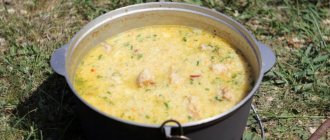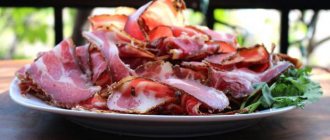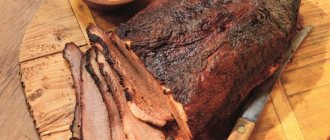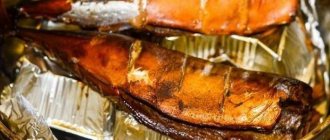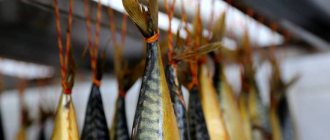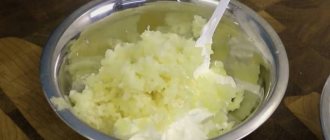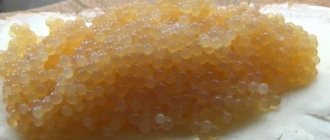The most popular baits among anglers are worms, maggots, corn and pearl barley.
The first three nozzles can be purchased ready-made, but with pearl barley, for some reason there is a complete puncture. Not a single manufacturer of ready-made baits has ever taken pearl barley seriously, although very often fish prefer it. Barley is an integral part of many recipes and not a single fisherman will go fishing without preparing barley porridge. At the same time, each fisherman prepares pearl barley in his own way: some boil it, others steam it. And then the question arises: what to do with pearl barley? Boil or steam? This is a very serious topic of conversation and in this article you can try to figure it out. Every fisherman, before he got the porridge he needed, more than once came back from fishing “with nothing.” This or that cooking recipe is the result of many years of work, which means that preparing pearl barley correctly requires a lot of experience and patience. If you take fishermen sitting on the shore who use pearl barley as bait, then they will all have a completely different bite. It is not difficult to understand that each of them prepared pearl barley using individual technology. To the above we should add the fact that many of them practice the use of “chemistry” - taste enhancers and flavorings. As a result, everyone will have their own catch.
Oddly enough, the outcome of the fishing depends on the softness of the pearl barley, and this, in turn, indicates the technology of its preparation.
When going fishing, you need to remember that not every day the bite can be active, there are days, and there are more of them, when there is “no bite” at all, but this does not mean that the fish did not like the pearl barley. According to fishermen, you can catch any fish with this bait. Crucian carp, roach, and bream are not against eating it, but if there is a large fish at the bait site, such as rudd or ide, there is a high probability that it will not refuse pearl barley. You can use pearl barley throughout the summer, from May to September. During particularly hot periods, fish can completely abandon baits of animal origin, but never barley.
It can form the basis of many bait mixtures due to its low cost and ability to retain fish at the bait site for a long time. As practice shows, adding pearl barley, peas and millet to bait mixtures makes such mixtures very attractive to large fish.
Pearl barley in bait for feeder feeder
Two cooking methods have become widespread:
This recipe is one of the popular ones and can attract carp, crucian carp and bream. To prepare such porridge, you need to take a glass of barley and pour six glasses of water, adding a little sugar and salt. After the barley has been cooked for about 20 minutes, a glass of millet is added to the barley. After this, the porridge is cooked over low heat with constant stirring until the porridge has absorbed all the water, and this is about 30-40 minutes. After this, the fire is turned off and a little honey, vegetable oil or other natural ingredients with a pleasant taste can be added to the porridge, after which the cooked porridge is left to cool completely.- The following recipe is intended to attract bream, especially when the first cold weather appears, when it begins to actively feed almost around the clock. To do this, you need to take 2-3 glasses of peas and fill it with six or eight glasses of water. Place the peas on the fire and cook until fully cooked. The finished mixture should resemble soup with overcooked peas. You need to add 2 cups of pearl barley to this soup and continue to cook this entire mixture for another 30-50 minutes. After this, the finished mixture should be placed in a warm place where it will reach its condition. The resulting mixture can be placed in a feeder, and pearl barley grain can be used as bait.
To get a good result, first bait is made with dry mixtures with the gradual addition of such porridge to them, bringing the proportions to 50x50. At the same time, the bait does not need to be tamped into the feeder, since the porridge sticks well to the dry ingredients and holds well in the feeder, even if you have to fish in the current.
Recipes for cooking pearl barley for fishing
There are other equally popular recipes for making porridge:
- Adding barley and black bread. We take both ingredients (cereals and pearl barley) in a 1:1 ratio and add a pinch of bread. Cereals should be cooked for forty minutes, and bread should be added five minutes before readiness. Sometimes the consistency is so thin that it needs to be thickened immediately. Then add a small amount of dry barley.
- Adding breading. Boil a glass of pearl barley for 40-50 minutes. Stir thoroughly every few minutes to prevent the porridge from burning. Once ready, rinse thoroughly and add crackers on top. A distinctive property of this bait is that it additionally attracts the attention of fish with the help of crackers that dissolve in water.
- Use of flavorings. Barley is cooked according to the usual principle and washed to remove the mucus released. Next, a couple of drops of flavoring are added, which will undoubtedly attract the attention of the prey.
Do you need mucus or not?
If barley is cooked for a long time, starch is released from it, which is formed in the form of mucus and will give the barley such an “interesting” look. But fish, unlike humans, do not disdain such pearl barley; moreover, the mucus attracts it, as it has a pronounced smell. Therefore, after preparing it, the pearl barley should not be washed, taking into account other factors. As a rule, starch has astringent properties, which allows the porridge to hold well in the feeder and not disintegrate so quickly in the water, especially if fishing is carried out in the current. You should not do this even if pearl barley will be used as a bait. If you wash it, it will no longer have its original smell, which will negatively affect the bite. Fishermen have noticed that fish are more attracted to freshly planted grains, rather than those that have been in the water several times.
But among fishermen there are those who think differently and after each preparation the grains are washed, dried and only used in this form.
Boil or infuse in a thermos?
You can cook in any way, the main thing is to choose the optimal time. The process of cooking in a thermos is very simple and does not require time, but it does not always pay off.
The cooking time is greatly influenced by the freshness of the product. When purchasing, you should pay special attention to this factor: if the pearl barley is not fresh or suspicious, then it is better to refuse to buy it.
To reduce cooking time, pearl barley can be soaked in water. It can be kept in the refrigerator in a bowl with water, changing the water from time to time for 2 or 3 days. After this, it can be used raw, but this approach takes a lot of time and it is better to use faster cooking recipes.
What to add to pearl barley?
Basically, supplements are divided into “before” and “after”. At the same time, you should know that pearl barley, prepared correctly, requires virtually no additives. But, as they say, you can’t spoil porridge with oil, so before cooking you can add the following to the barley:
- sugar and salt, a little;
- crushed sunflower seeds, after which pearl barley has an attractive aroma;
- vegetable oil, unrefined. It is added as a last resort;
- hemp seeds. They are added just before cooking and boiled together with pearl barley;
- honey. It should be diluted in water before cooking;
- garlic. To do this, you can take a couple of cloves and place them in the porridge during the cooking process. Sometimes it works, sometimes it doesn’t;
- food coloring, preferably bright yellow or red.
This is what is added “before”, and now we can talk about what is added “after”:
- You can add ready-made pearl barley to the prepared pearl barley. Dry bait or breadcrumbs. All of this together or separately is ground with grains. It is most rational to do this immediately before fishing. Breadcrumbs dry the porridge, which makes it possible to obtain the necessary consistency, and when they fall into the water, they fall off the pearl barley grains and form a food cloud, which additionally attracts fish;
- from 1 to 2 teaspoons of honey;
- unrefined sunflower oil;
- a little chopped cinnamon;
- vanillin;
- anise;
- Corvalol;
- fruit syrups;
- taste and smell enhancers. As for “chemicals”, you need to be very careful and think a hundred times about whether they are worth using.
Secret recipes for catchy pearl barley
Experienced fishermen know that every fish likes its own smell. Peaceful fish are simply “crazy” about sweet aromas, so fishermen add various sweets to their baits and baits. We will add honey to the mixture. It is sweet, smells good, and will effectively lure fish to the desired location. There is no need to feel sorry for the honey - every grain should be soaked, but at the final stage all that remains is to mix everything thoroughly.
Read! All about fishing with bread and bread crumbs
Barley with breading and honey
When a fisherman picks up a bait made from grain with honey, his hands become sticky. To avoid this, sprinkle the porridge with breading, dry semolina or ground cookies. She becomes, as it were, “shaggy”. This is where the name comes from. And the grains are easier to separate from each other, and the aroma is more piquant.
Barley with seeds
It is not necessary to resort to chemical methods in the process of preparing bait - fishing experience shows that this can be avoided. You only need to add a little ground and pre-roasted sunflower seeds during cooking. Thus, grains of pearl barley will become much more aromatic and attractive to the inhabitants of the reservoir. In addition, when immersed in water, small grains will peel off from the grains, which will additionally attract fish.
Salted pearl barley is better
Salt is a flavor enhancer, so a little salt in the porridge will not be too much. The main thing is not to overdo it with the amount and add salt wisely. A pinch is enough for a liter jar of the composition. However, many fishermen do not add salt to the bait at all, and do not complain about their catches.
Recipes for making pearl barley for fishing
When preparing pearl barley porridge, you should select the heat intensity so that it does not burn.
Option #1. You need to take 1 part of pearl barley and pour 5 parts of water, then put it on the fire, after the water boils, the fire is reduced to minimum. On this fire, the pearl barley should be cooked for one hour, with constant stirring. If you don't stir, the pearl barley may burn and you'll have to start all over again. Evidence that the porridge is ready is the absence of water in the vessel. After turning off the heat and stirring the porridge, it is left to cool in the pan, where it finally infuses. After the pearl barley is finally cooked, you need to put it into containers and add your own flavor to each container separately.
Option #2. The cooking technology is the same as in the first case, but after the porridge boils, add 1 teaspoon of baking soda. As a result of the action of soda, the grains will have a pinkish tint, and when ready they will become very soft. This is the only drawback of this method of preparation, since the pearl barley holds weakly on the hook and is very quickly pulled off by the fish. When planting such a pearl barley, you need to be prepared for very dynamic fishing.
Option #3. Instant barley. To do this, pour 1 cup of pearl barley into a pan and add up to 1.5 liters of water. The pearl barley is placed on high heat and cooked for 30-40 minutes, stirring it every 2-3 minutes. After this, we can assume that the nozzle is ready, but it should be borne in mind that it will be somewhat stiffer than in the first two options. Some fishermen prefer harder pearl barley, as it is very difficult to knock it off the hook.
How to cook pearl barley for fishing
Many novice fishermen really want to get an answer to the question of how to cook pearl barley for fishing so that it turns out effective and stays well on the hook. It's simple and there are no secrets in preparation.
You can divide the entire cooking process into several simple steps
:
- First you need to rinse the required amount of cereal under running water. As a rule, this is no more than 1 glass.
- Now you need to pour the washed cereal into a saucepan.
- Now you need to add water to the pan. As a rule, it is recommended to stick to a ratio of 1 to 3.
- Now you need to turn on the heat and constantly stir the contents of the pan. It is necessary to turn off the heat a little before the cereal is ready.
- After this you need to add flavorings, salt and sugar. If necessary.
Inexperienced fishermen are often faced with the problem of determining the degree of readiness of the cereal. Although this is very simple to do - you just need to use a needle. If you cook the cereal correctly, it will penetrate well with a needle and will stick to it without losing its shape.
It often happens that pearl barley is cooked for too long. But it's not fatal. Of course, to attach it to the hook you will have to cook new grain, but as the main component for bait, overcooked pearl barley will work very well.
If you are a beginner and have no idea how to cook barley for fishing without it burning, then a water bath will help you out.
Some fishermen advise dyeing the grains to increase their attractiveness. You should not use any dyes for this. You can dye pearl barley pink simply by adding a little baking soda to the water.
Infusing the nozzle in a thermos
This method is for very lazy fishermen, but it has its advantages: short cooking time and the possibility of the porridge burning. For these purposes, it is better to take a thermos with a wide neck, so that it is convenient to take out the porridge and wash the thermos.
Since pearl barley increases in size during steaming, the thermos is filled 2/3 with dry barley. This is especially important for thermoses with glass flasks. Before adding water, you need to warm it up with hot water. The hotter the water, the faster the pearl barley will cook. After pouring boiling water, it is advisable to shake the thermos and place it on its side.
Many fishermen practice the following technology: before going fishing, they pour pearl barley into a thermos and pour boiling water over it. Upon arrival at the reservoir, which is at least 2 hours, the pearl barley is ready for use. An ideal option for those who do not like to stand at the stove and waste precious time on such “little things” as preparing porridge for fishing. After arriving at the pond, you can add breadcrumbs, etc. to the steamed pearl barley.
To get a softer barley, you can prepare it in the evening, and in the morning all you have to do is throw it into your backpack.
How to put pearl barley on a hook?
You can put as many pearls on a hook as will fit on the hook, depending on its size. The size of the hook is usually selected based on the size of the fish that can be caught on the hook.
The pearl barley grain is pierced through the middle, in the area of the black stripe, which is very noticeable on the pearl barley. The point of the hook is passed through the entire grain so that it remains open.
Placing pearl barley on a hook
There are several hook attachment options. In the first option, you can plant several grains at once so that the device itself is not visible. In the second option, you can use just one grain so that the end of the hook is visible.
Pearl barley is a universal type of bait that will definitely come in handy when fishing. When prepared correctly, it is tightly fixed on the hook, which means consumption will be economical. Due to its low cost, cereal is affordable for absolutely everyone, so it is popular throughout the year, regardless of the season.
